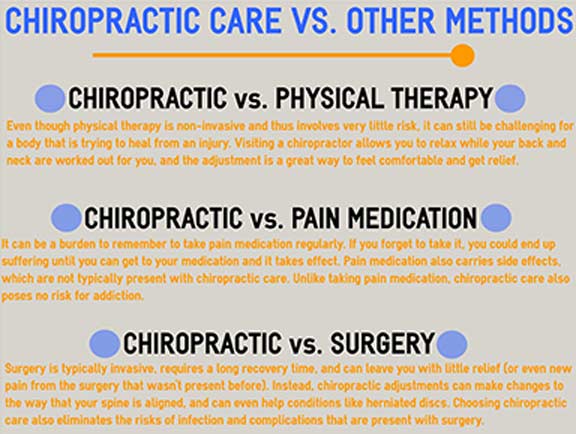Brace Yourself For An Exploration Right Into The Exciting Cellular Communications Of Cold Laser Therapy And Its Usage Of Light As A Recovery System. Take A Deeper Dive Into The Scientific Facets!
Brace Yourself For An Exploration Right Into The Exciting Cellular Communications Of Cold Laser Therapy And Its Usage Of Light As A Recovery System. Take A Deeper Dive Into The Scientific Facets!
Blog Article
Short Article Developed By-Rush Kornum
You may have come across cold laser therapy as a promising treatment option for numerous problems, yet have you ever before questioned how it actually works with a mobile level? Recognizing the devices behind this treatment can clarify its performance in promoting healing and lowering inflammation. By discovering the scientific research behind cold laser therapy, you'll acquire insights into the interesting ways in which light can affect cellular processes and promote cells repair.
How Cold Laser Treatment Functions
To understand just how cold laser treatment functions, you need to grasp the essential concepts of how light power connects with biological cells. Cold laser treatment, additionally referred to as low-level laser treatment (LLLT), utilizes particular wavelengths of light to permeate the skin and target hidden cells. Unlike the intense lasers used in surgeries, cold lasers produce low degrees of light that don't generate warmth or cause damages to the cells.
When these mild light waves get to the cells, they're soaked up by parts called chromophores, such as cytochrome c oxidase in mitochondria. This absorption causes a series of organic reactions, consisting of increased cellular energy manufacturing and the launch of nitric oxide, which improves blood circulation and reduces inflammation.
Moreover, the light power can likewise stimulate the production of adenosine triphosphate (ATP), the power money of cells, aiding in cellular repair service and regrowth procedures.
Fundamentally, click the up coming site utilizes the power of light energy to promote recovery and reduce pain in a non-invasive and mild way.
Systems of Activity
Exactly how does cold laser treatment really function to produce its restorative impacts on biological cells?
https://theconversation.com/thinking-of-laser-hair-removal-heres-what-you-need-to-know-113561 , likewise called low-level laser therapy (LLLT), operates through a procedure known as photobiomodulation. When the cold laser is related to the skin, the light energy penetrates the tissues and is taken in by chromophores within the cells.
These chromophores, such as cytochrome c oxidase in the mitochondria, are after that promoted by the light energy, causing a waterfall of biological reactions. One essential system of activity is the improvement of cellular metabolic rate.
The soaked up light power increases ATP production in the mitochondria, which is important for cellular feature and repair. In addition, cold laser treatment aids to minimize inflammation by preventing inflammatory arbitrators and promoting the release of anti-inflammatory cytokines.
This anti-inflammatory impact contributes to pain alleviation and tissue recovery.
Healing Results
Recognizing the healing impacts of cold laser treatment involves acknowledging how the boosted mobile metabolic rate and anti-inflammatory residential or commercial properties contribute to its favorable end results on biological cells.
When the cold laser is put on the affected location, it promotes the mitochondria within the cells, bring about increased manufacturing of adenosine triphosphate (ATP), which is vital for mobile function and fixing. This increase in cellular power increases the healing process by advertising tissue regrowth and lowering swelling.
Moreover, the anti-inflammatory residential properties of cold laser treatment aid to decrease discomfort and swelling in the targeted location. By preventing inflammatory mediators and promoting the release of anti-inflammatory cytokines, cold laser therapy help in reducing discomfort and improving the total recovery action.
This reduction in swelling not just provides instant relief yet likewise sustains long-term cells repair service.
Final thought
To conclude, cold laser therapy works by stimulating mobile fixing and cells regrowth with photobiomodulation. Its anti-inflammatory homes give pain relief and lower swelling by hindering inflammatory moderators.
This treatment provides a thorough technique to healing, supplying both immediate alleviation and long-term cells repair service benefits.
Through its devices of action, cold laser therapy shows to be a reliable and appealing treatment alternative for a selection of problems.
